Happy 200th Birthday, Elizabeth Gaskell! Although your life was cut short at 55, you still cast a bright light in our world.
“No, I tell you it’s the poor, and the poor only, as does such things for the poor. Don’t think to come over me with th’ old tale, that the rich know nothing of the trials of the poor; I say, if they don’t know, they ought to know. We’re their slaves as long as we can work…” – Elizabeth Gaskell, Mary Barton
Since babyhood Elizabeth Cleghorn Gaskell nee Stevenson experienced profound sorrow and a sense of loss and displacement. Her parents, Elizabeth and William Stevenson, had eight children, but only two survived – baby Elizabeth and her older brother John. Her mother did not live to raise her, for she died a year after her daugher’s birth. Sadly, her widowed father did not feel up to taking care of his young daughter and sent Elizabeth away to live with her Aunt Lumb in Knutsford, Chesire.
Under this loving aunt’s care, Elizabeth experienced a happy childhood. She played with cousins in the rural town of Knutsford where lived “11 widows of respectability who kept house, besides spinsters innumerable”. In later life, Elizabeth would use Knutsford as the idealized setting for Cranford. She was to return there often to recall the rare happy memories of her early childhood.
Elizabeth’s father continued to reject her even after his remarriage. When she was nine years old, he finally sent for her to visit him in London, but Elizabeth and her stepmother did not hit it off. In addition, her father and his new wife favored the children of their union. Although often reduced to tears by their indifference, Elizabeth did have one person she could turn to, her beloved brother John.
When Elizabeth was twelve, John joined the merchant navy. She would never see him again, for he drowned six years later off the coast of India. Within six months of John’s death, her griefstricken father also died. And thus, at the tender age of eighteen, Elizabeth was alone again.
William Turner, a distant relative, took Elizabeth in to live with his family. As a Unitarian minister he influenced her religious beliefs and introduced her to charitable works. It was through William Turner’s daugher that Elizabeth met William Gaskell, whom she married in the Knutsford Parish Church on August, 1832.
Gaskell was also a Unitarian minister and a lecturer and educator. After their honeymoon, the young couple moved to industrial Manchester, where William had acquired a post as minister of the Cross Street Chapel. Gaskell was also to hold the chair of English history and literature in Manchester New College.
Elizabeth would eventually bear her husband six children, the first of whom was a stillborn daughter. Considering the losses she had already experienced in her life, the death of this little girl, born in 1833, must have grieved her deeply. Three years afterward she penned this touching poem:
On Visiting the Grave of My Stillborn Little Girl
I made a vow within my soul, O child,
When thou wert laid beside my weary heart,
With marks of Death on every tender part,
That, if in time a living infant smiled,
Winning my ear with gentle sounds of love
In sunshine of such joy, I still would save
A green rest for thy memory, O Dove!
And oft times visit thy small, nameless grave.
Thee have I not forgot, my firstborn, thou
Whose eyes ne’er opened to my wistful gaze,
Whose suff’ rings stamped with pain thy little brow;
I think of thee in these far happier days,
And thou, my child, from thy bright heaven see
How well I keep my faithful vow to thee.
– Elizabeth Gaskell’s poem for her stillborn daughter, 1836
Then three healthy girls arrived in succession: Marianne (1834), Margaret Emily (1837), and Florence Elizabeth (1842). In 1844 she gave birth to her son William. These years marked a busy and productive period in Elizabeth’s life. Both the Gaskell’s divided their time between his ministry, their social life, and charity work. In Manchester, Gaskell witnessed the dire poverty of the textile workers, which was to have a lasting effect on her writing.
Between raising children and visiting the poor, Elizabeth managed to find the time to write. Her husband supported her in this endeavor, helping her with research and editing. The year she gave birth to her daugher Margaret, Elizabeth sold her first story to Blackwoods Magazine entitled “Sketches Among the Poor.” In 1846, she gave birth to another daughter, Julia.
Elizabeth’s life was a fulfilling and happy one until her nine-month old son, William, caught scarlet fever during a visit to Wales in1848, and died. The blow was too much. When a devastated Elizabeth was unable to rise out of bed, William encouraged her to concentrate on her writing and begin a novel. The result was Mary Barton, which told about the desperate poverty of those living in industrial cities like Manchester, a topic with which Elizabeth had become all too familiar during her charity work.
Mary Barton brought success to Elizabeth. She was paid £200 for the book, which was published anonymously. Charles Dickens sang its praises. Other admirers included John Ruskin, Charles Kingsley, and Thomas Carlyle. Although critics took a jaundiced view towards her championing of the poor and calls for social reform, the novel led to her writing other books, each one making her more money. From then on she published her books under her own name, Mrs. Gaskell.
Charles Dickens admired Elizabeth so much that he serialised her next novel, Cranford, in his journal, Household Words (1851-1853). More novels followed in rapid succession, including Ruth (1853), North and South (1855), and Sylvia’s Lovers (1863). These books did not represent her sole literary output. Elizabeth wrote several novellas, of which Cranford was one, as well as short stories and articles for periodicals.
After her good friend Charlotte Bronte died, Gaskell wrote her acclaimed biography, using firsthand accounts and sources. This led her into some legal trouble, for shortly after the book’s publication a few of the people mentioned in it threatened to sue for having been represented incorrectly.
She made many other important friends, and was an avid correspondent, writing thousands of letters to friends and near strangers with the rapidity and ease of someone who, had she lived in the future, would most likely have embraced email.*
Elizabeth’s novels were enormously popular with the public, and the Gaskells lived well, traveling around Europe, hiring servants, and moving into a bigger house, Plymouth Grove, which still stands. Even with the income from her books and her popularity, Elizabeth continued to remain involved in her husband’s ministry and charity work.
“He is very shy, but very merry when he is well, delights in puns & punning, is very fond of children… 6 foot high, grey hair and whiskers….I do believe he does like Manchester better than any other place in the world; and his study the best place in Manchester” – Elizabeth Gaskell, in describing her husband.
While Gaskell loved her husband dearly and was faithful to him, she did meet a young man in her later life who flattered her womanly ego. On one of her trips to Italy with her daughters, she met an American, Charles Norton, who was 20 years her junior and clearly worshipped her. One cannot be surprised by his attraction, for Elizabeth was a successful, intelligent, and passionate woman. But their friendship remained platonic and they corresponded until Elizabeth’s death. Her Roman flirtation left an indelible memory in Elizabeth’s mind: “It was in those charming Roman days that my life culminated,” she later wrote to a friend. “I shall never be so happy again. I don’t think I was ever so happy before.”**
Years of loss, sorrow, hard work, and success took a toll on her. Once a vibrant and lovely woman, she looked drawn and tired in later photographs. Elizabeth’s death came suddenly and unexpectedly on a visit to her cottage near Alton in Holybourne, Hampshire. Unknown to her husband, she had secretly purchased the house for their retirement.
“On Sunday November 12, 1865, she and her daughters spent a lazy morning before Elizabeth walked up the lane to church. The vicar thought she looked extremely well.
At 5pm, everyone sat in the drawing room for tea. Elizabeth was gossiping, relating a conversation she’d had with a judge when, mid-sentence, she stopped, gasped and slumped down dead from a heart attack.” – The Daily Mail Online, 2007
Elizabeth had been witing her last work, Wives and Daughters, which remained unfinished. After her unexpected death, a friend wrote, “The world of English letters has lost one of its foremost authors,” a sentiment the Anthenaeum echoed: “If not the most popular, with small question, the most powerful and finished female novelist of an epoch singularly rich in female novelists.”
Elizabeth is buried at Brookstreet Chapel in Knutsford. William Gaskell survived her by two decades and never retired, serving as Minister in Cross Street and living in Plymouth Grove with two daughters until his death in 1884. He is buried beside her.
In terms of her legacy, this 1989 letter by Henry Rollin, Chairman, History of Psychiatry Group, sums up Elizabeth Gaskell’s body of work:
But of greater importance to the medical historian are the glimpses she gives in her novels of the socioeconomic diseases of the period of which she writes. Life is cheap. Alcoholism and prostitution are rife. Cholera and typhus are commonplace. Women die in childbirth. And she reveals in harrowing detail the prevalence of opium addiction. John Barton, the father of Mary Barton in her novel of that name, is portrayed as a man so bitterly humiliated by his abject failure in all departments of his life that he degenerates into the quintessential opium addict. But even more haunting is the intense pathos of her description of the relationship between opium and the grinding poverty and near-starvation of the underprivileged. “Many a penny that would have gone little way enough in oatmeal or potatoes, bought opium to still the hungry little ones, and make them forget their uneasiness in heavy troubled sleep”, she writes of the Manchester she knew in her day-to-day work as the wife of a Unitarian minister.”
In honor of the Bicentenary, Mrs. Gaskell was included in the poet’s corner in Westminster Abbey, a top honor indeed. Rest in peace, Elizabeth Gaskell, and happy, happy birthday!
Gentle Reader: This blog has joined fourteen others in celebrating the Elizabeth Gaskell Bicentenary Blog Tour, sponsored by Austenprose. The next blog on your tour is Mary Barton (1848) Book: Kelly’s of the Jane Austen Sequel Examiner. She will discuss Mary Barton, Gaskell’s first book.
 Leave a comment below for a chance to win a copy of an unabridged edition of North and South by Naxos AudioBooks read by Clare Willie. Deadline October 7th, midnight PT
Leave a comment below for a chance to win a copy of an unabridged edition of North and South by Naxos AudioBooks read by Clare Willie. Deadline October 7th, midnight PT
Sources:
- Elizabeth Gaskell House
- Famous People: Elizabeth Gaskel
- The Gaskell Society
- Elizabeth Gaskell: The Making of Cranford
- Plymouth Grove, Elizabeth Gaskell’s home in Manchester
- Elizabeth Gaskell’s Knutford
- Elizabeth Gaskell, Laurentian University
- The Life of Charlotte Bronte by Elizabeth Cleghorn Gaskell , Google Book
- The Elizabeth Gaskell Collection, Barnes and Noble
- Elizabeth Gaskell Blog
- *Elizabeth Gaskell Bicentenary Exhibition
- **The Amazing Secret Life of Cranford Creator Elizabeth Gaskell, The Daily Mail, 2007
The Gaskell Blog Tour:
Biography
- 1.) Elizabeth Gaskell’s life and times: Vic – Jane Austen’s World
Novels/Biography
- 2.) Mary Barton (1848) Book: Kelly – Jane Austen Sequel Examiner
- 3.) Cranford (2007) Movie: Laura – The Calico Critic
- 4.) Ruth (1853) Book: Joanna – Regency Romantic
- 5.) North and South (1854–5) Book: Laurel Ann – Austenprose
- 6.) North and South (2004) Movie: Maria – Fly High
- 7.) Sylvia’s Lovers (1863) Book: Courtney – Stiletto Storytime
- 8.) Wives and Daughters (1865) Book: Katherine – November’s Autumn
- 9.) Wives and Daughters (1999) Movie: Elaine – Random Jottings
- 10.) The Life of Charlotte Bronte (1857) Book & (1973) Movie, The Brontes of Haworth: JaneGS – Reading, Writing, Working, Playing
- 11. Mr. Harrison’s Confessions (1851) Book: Alexandra – The Sleepless Reader
- 12. My Lady Ludlow (1859) Book: Alexandra – The Sleepless Reader
- 13. Cousin Phillis (1864) Book: Alexandra – The Sleepless Reader
Resources
- 14.) Your Gaskell Library – a select bibliography of written resources and links to MP3′s, ebooks, audio books, other downloads and reading resources available online: Janeite Deb – Jane Austen in Vermont
- 15) Plymouth Grove – A Visit to Elizabeth Gaskell’s home in Manchester: Tony Grant – London Calling

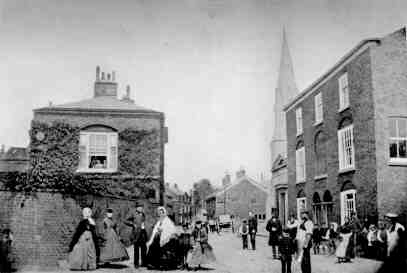
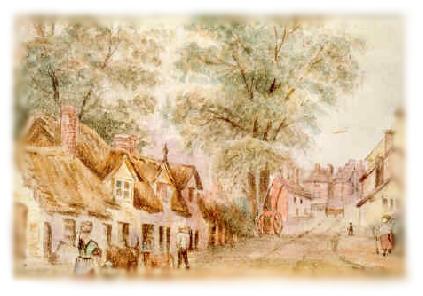
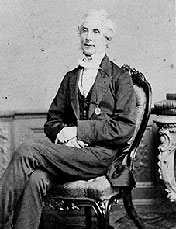

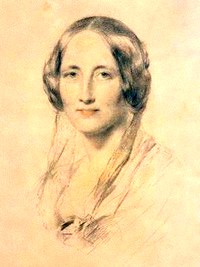
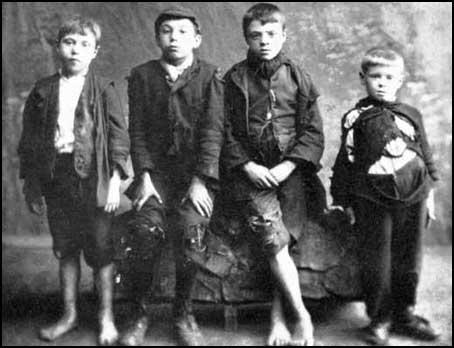



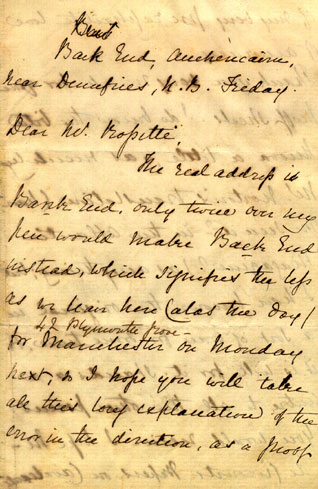


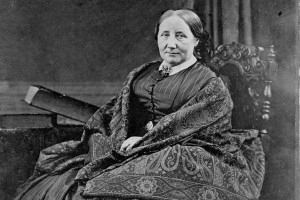
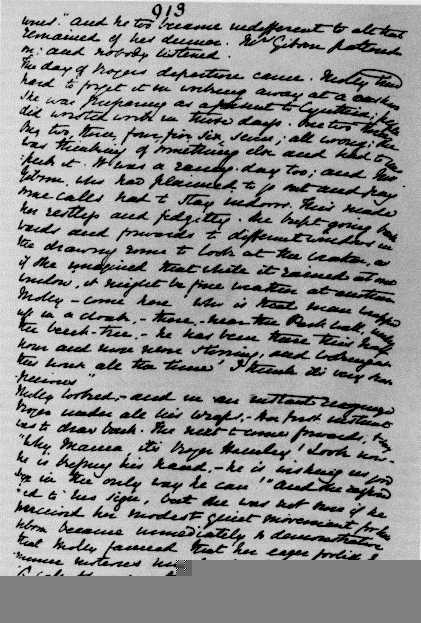

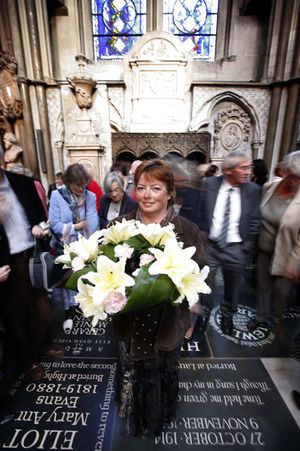
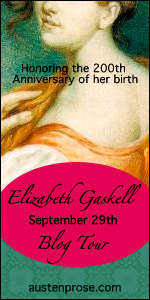








What a life. I’d love to win the audiobook.
interesting to see mrs gaskell and her life…. thanks for posting this.. and happy birthday elizabeth!
Ah, how I loved these novels back in college. And now I watch all various adaptations done by the BBC on PBS. I am a lifelong UU, and love learning about the UUs who came before us, especially those who were so literate, passionate and productive! Social justice has always been a hallmark of the UU tradition, and Elizabeth’s efforts were so courageous for the time. Thanks so much for writing this post and I’m glad I follow you on Twitter! Winning the book would be nice, too, but I clicked on your link when I saw that it was a post about EG’s life.
[…] This post was mentioned on Twitter by Vic and Jane Austen LIVES, Alejandra Vásquez. Alejandra Vásquez said: RT @janeaustenworld: Celebrating Elizabeth Gaskell's 200th birthday with a post about her life. Win an audio book by leaving a comment. http://bit.ly/bHODtJ […]
If I’m honest, I have to say that I read all of Elizabeth Gaskell in college and don’t remember a darn thing about her books, whereas Austen stuck like a burr. However, I have really enjoyed the recent BBC adaptations of Wives and Daughters, North and South and Cranford, and have copies on the ‘good movie’ shelf.
I am a great admirer of Gaskell’s life and work. Thank you for the bio. Mary
[…] Elizabeth Gaskell’s life and times: Vic – Jane Austen’s […]
The next time I am in Manchester, staying in Chorlton cum Hardy, I’m going to go to Plymouth Grove.
Must call in at Holybourne one of these days too.
A really well written piece, Vic. Thank you very much.
Tony
[…] Elizabeth Gaskell’s life and times: Vic – Jane Austen’s […]
It was nice to read about Elizabeth Gaskell, I haven’t heard of her before. But it’s always good to know biographies.
Why isn’t her friendship with C. Bronte,or her biography of same, mentioned? She was one of the first women biographers though today’s scholars consider it a little too admiring of the Bronte menage.
At least Elizabeth, unlike her subject, had a happy and prosperous life.
Hi Robin, I mentioned the friendship in passing, only one or two lines. Elizabeth’s life was so full and interesting, and filled with friends, activities, travel, and writing, that I decided to concentrate on her losses. My thinking was that her charitable heart and empathy for the disenfranchised stemmed from her own childhood.
Vic
“11 widows of respectability who kept house, besides spinsters innumerable” as the inspiration for Cranford! I didn’t know that, interesting…
I’d like know more about the Gaskell’s courting period (if there was one). Is there any information about it? Letters or memoirs?
I love the illustrations that you included in this bio, Vic! Very vivid and I love seeing the penmanship of writers.
I’ve only known bits and pieces about Gaskell’s life, so this was very illuminating. I didn’t know that she found another ‘love’ (albeit platonic and a much younger man at that!) at the twilight of her life… =)
Is the pictured great, great, great granddaughter, Sarah Prince, also a writer?
[…] 1.) Elizabeth Gaskell’s life and times: Vic – Jane Austen’s World […]
Elizabeth Gaskell is such a wonderful writer, it’s a great shame she’s so little known! I was glad to learn that her husband was supportive of her work, even suggesting she write as a form of grieving. Her poem to her stillborn daughter is deeply touching…
How very interesting! In reading about Mrs. Gaskell’s life one can see so much that later showed up in her novels. The similarities between Knutsford and Cranford are amazing. Thanks for this series of articles and reviews.
Hi Vic, your bio is really interesting! Thanks a lot!
I wrote a post about the Bicentenary Celebration, there are some books in portuguese too:
http://janeaustenclub.blogspot.com/2010/09/parabens-elizabeth-gaskell.html
Adriana
Hello Vic! Thank you for sharing the information about Mrs. Gaskell. As your article indicates, the more you know about her and her background the better you can understand her writings.
I loved your selection of photographs & drawings. Can you imagine her sitting in the top room of Gilbraltar Tower writing? The photograph has such a gothic feel. Of course you have shared that famous photograph of her wearing her Indian shawl which brings to mind Margaret modeling Edith’s collection for Aunt Shaw & friends.
I heard that she was a prolific letter writer and I would be interested in reading some of her correspondence. Can you make a recommendation?
This is such a lovely way to celebrate her 200th. Well, it is 9am in E. coast US and it is time for the bus to leave for the next stop of the tour.
Thanks!
My best friend from grad school introduced me to Elizabeth Gaskell and since then I have been hooked on her stories! I’ve greatly enjoyed learning more about her life and the celebration of her 200th through these blogs. Thanks!
A good writer and humanitarian.
How interesting this article is, Vic. I’ve read a lot of Gaskell but never really learned about her life. Like you describe, her losses must have influenced her writing a lot.
It would have been interesting to read about the links between Gaskell and Jane Austen as well.
I didn’t know anything about Mrs Gaskell until reading this post–now I will rush out and get one of her books and start reading it! She lived a noble and rich life–a woman’s life–and she is much to be admired. Thank you for sharing this and for your blog. It has opened a new door for me in literature and reading. Blessings!
I recently read a biography of Beatrix Potter, whose family was involved in manufacturing in the North, and friendly with the Gaskell’s, and I speculate that much of Mrs. Gaskell’s knowledge of the lives and thoughts of manufacturers, particularly the reform minded, was gained through her intimacy with the Potters.
Thank you for clarifying a photograph for me, which is of William Gaskell with a young Beatrix sitting on his lap. Priceless.
Just imagine being in the circle of friends with these authors. Potters, Twain, Brontes… the mind goes to interesting places.
Gah…. not Twain! Dickens. Can you tell I’m reading Twain right now. >:/ LOL!
That’s quite understandable! For a while I was calling Elizabeth “Mary”. I had to edit out all the mistakes. :)
Very nice summary of Elizabeth Gaskell’s life and times. One of the things I admire most about her books is the glimpses of real life she adds. When I first read her books many years ago, I found them heavy going compared to Jane Austen, but I’ve appreciated the fullness of them more in recent years.
I somehow always thought that Cranford was one of her last works, I guess I was very much mistaken! It was wonderful to read up on her life and you did such a thorough job of representing it. I love the works by Gaskell, but never took the time to get to know more about her life. May I ask if you know of any good biographies about her?
What an excellent article! I must admit I never read Mrs Gaskell but I will now. So thanks, Vic, for promoting her in this very readable way.
You know, this is the first I have ever read about the life of Elizabeth Gaskell. This is a definite shame because she seemed to have a most interesting life. I would be interested to learn more about the lawsuit over her biography and her late-life romance with the younger man! Thanks for this bio, Vic, and happy birthday to Elizabeth!
Wonderful summery of her life and times. I am reading her bio now, I have to say that just reading about her life makes me tired. How she was able to be a clergyman’s wife, mother, etc and still be able to write her wonderful novels!
When I read that she had secretly bought a house for her and her husbands retirement, I was amazed. You don’t hear that too often about women in the Victorian age.
[…] Jane Austen’s World: Elizabeth Cleghorn Gaskell-(1810-1865): A short description of her life and literary career […]
I really enjoyed reading your bio of Gaskell–you really captured her essence–her energy, interests, compassion, and role as author with a purpose and a conscience who literally worked herself to death.
I really loved the various images that illustrate the post as well, and the poem to her still-born daughter is so poignant.
I agree–I can definitely see Gaskell loving email!
Thanks for a terrific post to lead off the tour :)
Since seeing the mini-series of North & South, every time I see the 1851 portrait of Mrs. Gaskell by George Richmond, I am struck by the resemblance of Lesley Manville, who played Mrs. Hale in North & South (and Mrs. Rose in Cranford), to Mrs. Gaskell and . It is somewhat evident in the publicity photos of Ms. Manville seen on imdb, but much more so when she was in character as Mrs. Hale. Has anyone else noticed a resemblance?
Wonderful tribute Vic. You have touched upon a great talent who excelled through tragedy. I love her work. Thanks for participating in the blog tour. You always surpass my expectations.
Dear Vic,
Ruth, first episode
BBC Radio
http://www.bbc.co.uk/iplayer/episode/b00tx095/Ruth_Episode_1/
You don’t have to enter me in the contest but I wanted to comment and say that I have long since been a fan of Mrs. Gaskell’s writing. I have read and enjoyed North and South and Cranford. I love the A&E version of North & South (who doesn’t love Richard Armitage as John Thornton?) and both of the PBS mini-series of Cranford. Wives & Daughters is a good mini-series as well. Thank you for remembering this wonderful writer and bringing her to the attention of others.
[…] 1.) Elizabeth Gaskell’s life and times: Vic – Jane Austen’s World […]
An excellent post…well written and thought out. It is an introduction to Gaskell that would interest anyone…what a life she lived and what sorrows she had to draw on for her writing…Thank you.
Courtney
[…] again since I developed a new sympathy for the character Roger Hamley, and when I found out via Jane Austen’s World that yesterday was Elizabeth Gaskell’s 200th birthday (she wrote the original Wives and […]
I would love to win the audio book. I wish they would come out with an unabridged version read by Richard Armitage. Wouldn’t that be a big seller?
I never heard of Elizabeth Gaskell until I rented North & South from Netflix. I would also love to see the adaptation with Patrick Stewart.
Thanks Raquel for the link to the first episode of Ruth on BBC Rado.
I have enjoyed reading Gaskell’s books in the past. I loved the information you presented. I don’t believe I’ve read so much about her personally before or some how I lost track of it. I didn’t realize so much of her life was related to the books she wrote. What sadness she must have seen and experienced. I like that her works are so much more detailed and socio-economically inclined. They are heavier than Austen’s works as mentioned above but as also mentioned for each book there is a season so to speak. Different things at different times keep life so amusing and interesting.
Thanks for this great info. I too would love to win the audiobook.
Everything Gaskell wrote is incredible. Even her non-fiction. Life of Charlotte Brontë can be very atmospheric and at the same time full of information.
I think Wives and Daughters is her best work, although North and South is my personal favorite.
Thanks for the biography. It will enrich my reading of her.
[…] a post on Gaskell’s Wives and Daughters for the September 29th Blog Celebration that begins here – scroll down for the links to the 15 blogs that participated in this tribute to Gaskell on her […]
[…] 1.) Elizabeth Gaskell’s life and times: Vic – Jane Austen’s World […]
It was the Wives and Daughters miniseries which made the name of Elizabeth Gaskell known to me (yes, I began with the last) and though I do not think I can be properly called a Gaskellian (I’ve not read Ruth nor Sylvia’s Lovers), she is certainly among the writers I recommend and it is good to know she is given a more proper recognition.
Thank you Vic for introducing such a splendid segment of Elizabeth Gaskell’s biography. It was well worth your best efforts in narrating most important glimpses of her life. I also valued the pictures’ insertion into the article, they are really unique. I see that Elizabeth Gaskell was a very beautiful lady, no wonder she attracted the young man during her Italian travel. It would be nice to know of which Elizabeth Gaskell’s descendant line is Sarah Price her gr. gr. gr. grand daughter, and few other facts about her.
I absolutely love “Wives and Daughters”. I just stumbled across this blog. I would love to win the audio book. Something to listen to on my way to and from work!
This was a fascinating post! I haven’t read any of Mrs. Gaskell’s works yet, I have seen the Cranford movies, but I am definitely going to. I was also very excited to learn that Elizabeth and I share our birthday! Thank you for posting this!
I was introduced to Elizabeth Gaskell through a chance viewing of BBC’s North & South earlier this year and fell promptly in love! Thank you for the biography :)
[…] Elizabeth Gaskell’s life and times: Vic – Jane Austen’s […]
[…] My post about Elizabeth Gaskell: A Short description of Her Life […]
Hi, I have a book by Mrs. Gaskell called Cranford. I love it. I would really like to know the date the book was published. A previous owner wrote 1901, but I am wondering if anyone knows a website that shows images of book editions. thanks
[…] When Elizabeth was nine she visited her father in London. He had remarried, and, unfortunately, Elizabeth did not get along with her new stepmother, Catherine Thomson. To complicate matters William and Catherine preferred their own children, and Elizabeth often felt like the odd man out. Eventually she was sent to live with a distant relative, another William, William Turner. Turner was a A staunch proponent of reform and the abolition of oppressive and inhumane practices such as slavery, his outspoken criticisms profoundly affected Elizabeth’s values and her perspective on life. [The Literature Network] Elizabeth Gaskell around the time of her marriage, 1832 (Image courtesy: Jane Austen’s World) […]